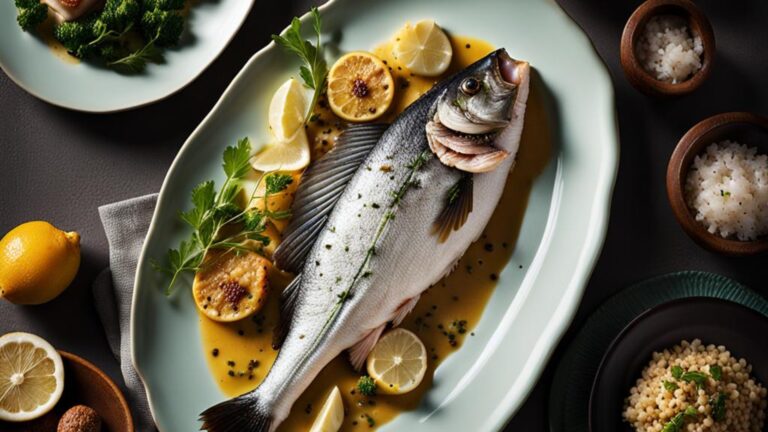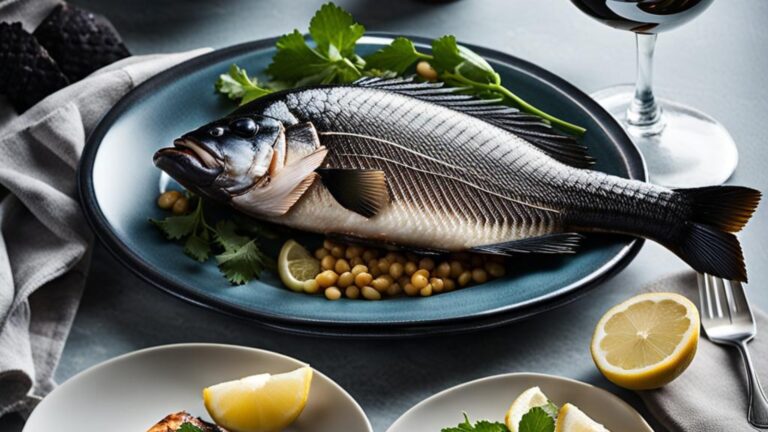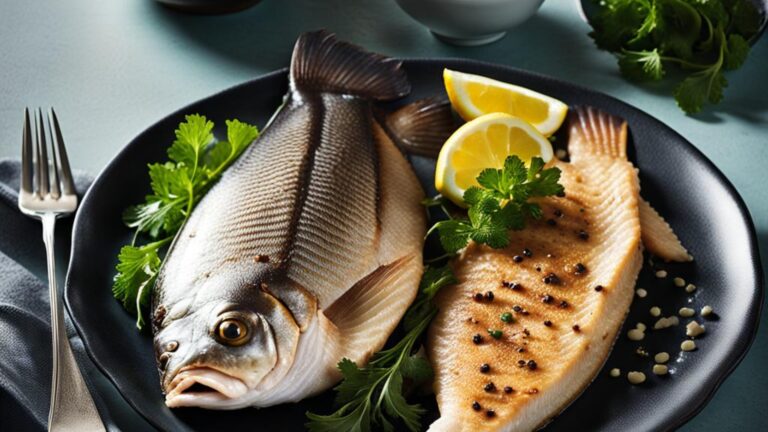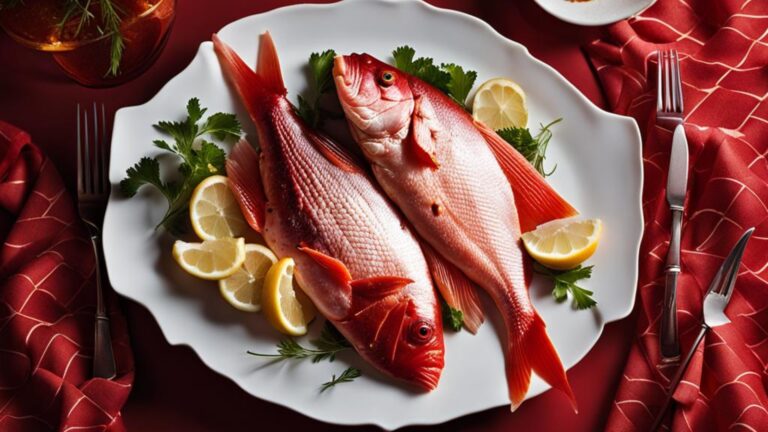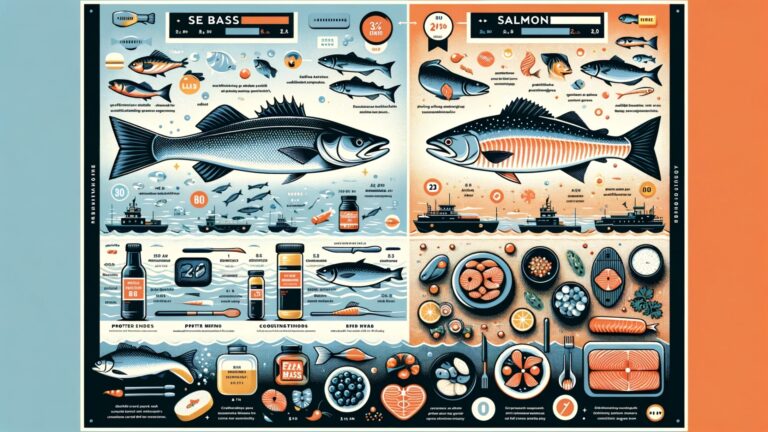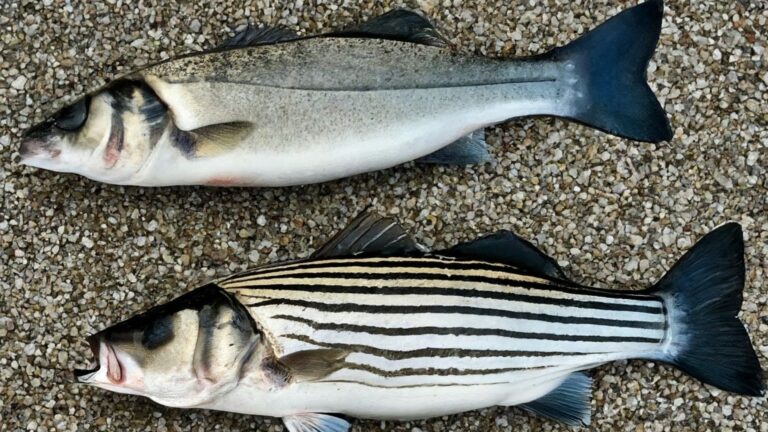
Chilean Sea vs Salmon, a comparison of the two common Atlantic fishes, is often a common topic regarding sea fishes.
Chilean Sea Bass is more prominent, with a rich, buttery flavor. Salmon comes in various species, offering a milder taste and distinctive pink to orange hues.
I will demonstrate the similarities and differences and help you learn more about these two fishes. From their native regions to their nutritional value, nothing will be spared.
While doing my research, I took help from different authentic websites. I checked on forums to get experts’ opinions so that I could present the most updated and authentic information to you. Let’s begin our quest.
An Overview
Let’s briefly check on the differences and similarities in the following table before I take you into a detailed discussion. Here is a comparison table between these two.
| Characteristic | Salmon | Chilean Sea Bass |
| Family | Salmonidae | Nototheniidae |
| Native Regions | North America, Iceland, Greenland, Europe, and Russia | South Atlantic, Pacific, Southern Ocean, and Indian Oceans |
| Size (Weight and Length) | 4-20 pounds and 15-35 inches | 250 pounds, 72-84 inches |
| Body Shape | Mostly torpedo-shaped. Some are flat, some are round | Large head and mouth, tight scales, and a broad, fork-less tail |
| Coloration (Color) | Vibrant red, pale pink, or even white | Differ from gray to brown |
| Diet | The rich, buttery flavor | Crustaceans, pelagic fish, and several cephalopods |
| As a Food | Sweet and fatty texture | Rich, buttery flavor |
| Tastes like trout or chicken | Tender, flaky texture | |
| Popular Species | Atlantic salmon | N/A |
| Pink salmon | N/A | |
| Lifespan | 2 to 7 years | 40 or 50 years |
Chilean Sea Bass vs. Salmon: Detailed Differences
Salmon and Chilean Sea Bass are distinct fish species with notable differences in various aspects, ranging from their family and native regions to their size, taste, and other characteristics.

Family and Native Regions
Salmon belongs to the Salmonidae family and is native to North America, Iceland, Greenland, Europe, and Russia.
In contrast, the Chilean Sea Bass, scientifically known as Dissostichus eleginoides, is a member of the Nototheniidae family and is found in the South Atlantic, Pacific, Southern Ocean, and Indian Oceans.
Size
Salmon ranges from 4 to 20 pounds and measures 15 to 35 inches long. However, while researching, I learned about some salmon that weighed 100 pounds!
On the other hand, the Chilean Sea Bass is notably more prominent, with individuals reaching weights of up to 250 pounds and lengths between 72 to 84 inches.
Body Shape and Coloration
Salmon exhibit a primarily torpedo-shaped body, although some species may vary with flat or round shapes. Depending on the specific type, their coloration can range from vibrant red and pale pink to even white.
In contrast, the Chilean Sea Bass boasts a distinctive appearance with a large head and mouth, tight scales, and a broad, fork-less tail.
Their coloration varies from gray to brown, allowing them to blend effectively with their deep-sea habitats.
Diet
Salmon are opportunistic hunters, consuming a diverse diet that includes shrimp, mayflies, stoneflies, sprats, zooplankton, and other aquatic organisms.
Chilean Sea Bass also have a varied diet, feeding on crustaceans, pelagic fish, and several cephalopods.
Flavor and Texture
Salmon offers a sweet and fatty texture with flavors ranging from mild to rich, depending on the species and its diet.
On the other hand, Chilean Sea Bass is renowned for its rich, buttery flavor, often likened to a cross between trout and chicken.
Popular Species
Among the famous species of salmon are the Atlantic salmon and the pink salmon. In comparison, Chilean Sea Bass does not have well-defined subspecies that are commonly recognized.
Lifespan
Salmon have a shorter lifespan, ranging from 2 to 7 years, depending on the species and environmental factors. In contrast, the Chilean Sea Bass is known for its impressive longevity, with individuals living up to 40 or 50 years.
Sustainability and Conservation Concerns
Salmon farming has raised concerns about its environmental impact, including issues related to disease, pollution from waste, and the use of antibiotics.
Overfishing of specific wild salmon populations has also been a concern in some regions, affecting their sustainability.
Chilean Sea Bass faces significant sustainability concerns due to illegal, unreported, and unregulated (IUU) fishing practices.
Its slow growth rate, long lifespan, and vulnerability to overfishing have led to population declines and potential threats to the marine ecosystem.
Habitat and Distribution
Salmon are known for their anadromous behavior, which involves migrating from freshwater to the ocean and returning to freshwater to spawn.
They inhabit rivers and coastal waters. Salmon can be found in North America, Europe, and Asia.
On the other hand, Chilean Sea Bass is a deep-sea fish that inhabits cold, deep waters at depths of up to 8,200 feet (2,500 meters).
They are commonly found around sub-Antarctic islands and the southern oceans, particularly around Chile and Argentina.
Chilean Sea Bass vs. Salmon: As a Food
When choosing between Chilean Sea Bass and Salmon as a culinary delight, you’ll indulge in two distinct and delectable experiences.
While talking about Chilean Sea Bass, I would paint a picture of a luxurious treat for your taste buds. Its rich, buttery flavor offers a delightful dance of sweetness that can make you feel like you’re savoring a true gourmet masterpiece.
The tender and flaky texture would invite you to a velvety sensation.
Whether I grill it to perfection or gently poach it, the Chilean Sea Bass holds its own, complementing the light sauces and zesty citrus notes I carefully pair it with.
Now, let me introduce you to the world of Salmon. I encourage you to appreciate the firm and meaty texture that defines Salmon, lending itself perfectly to the grill, broiler, or even your sushi platter.
The diverse taste spectrum of Salmon will entice your palate.
Moreover, the nutritional benefits can’t be overlooked – the omega-3 fatty acids and high-quality protein that Salmon brings to the table are pleasing to your taste buds and nourishing for your well-being.
Nutritional Differences Between Chilean Sea Bass and Salmon
Chilean Sea Bass and Salmon exhibit distinct nutritional differences. Regarding calories, Chilean Sea Bass has 234, slightly higher than Salmon’s 208. While Salmon provides 20g of protein, Chilean Sea Bass offers 16g.
The total fat content varies significantly, with Chilean Sea Bass containing 19g and Salmon having 13g.
Sodium content is slightly elevated in Chilean Sea Bass (94mg) versus Salmon (59mg). Salmon provides notable amounts of vitamin B12 (3.2mcg) and iron (0.3mg), whereas the specific iron content for Chilean Sea Bass is unspecified.
These nutritional distinctions can influence dietary choices based on individual health considerations and preferences.
Nutritional Table
| Nutrient | Salmon | Chilean Sea Bass |
| Calories | 208 | 234 |
| Protein | 20 | 16 g |
| Total Fat | 13 g | 19 g |
| Saturated Fat | 3.1 g | 0.44 g |
| Cholesterol | 55 mg | 38 mg |
| Sodium | 59 mg | 94 mg |
| Iron | 0.3 mg | Not Specified |
| Vitamin B12 | 3.2 mcg | 0.5 mcg |
Similarities Between Chilean Sea Bass and Salmon
While looking for the differences between these two kinds of seafood, I came across different similarities, too.
It is amazing to think how these two distant species share so many similarities and differences.
- Both Chilean Sea Bass and Salmon offer substantial protein content.
- Both fish are abundant sources of essential omega-3 fatty acids, promoting heart health.
- They reduce inflammation and support brain function.
- Chilean Sea Bass and Salmon provide important nutrients like vitamin B12, crucial for nerve function, and iron, aiding oxygen transport.
- While unique in taste, both fish boast desirable textures – Chilean Sea Bass with its tender, flaky consistency and Salmon with its firm, meaty texture.
- Both fish can be paired with various flavors, herbs, and sauces.
Conclusion
The comparison between Chilean Sea Bass and Salmon reveals a captivating interplay of flavors, textures, and nutritional attributes.
While Chilean Sea Bass captivates with its rich, buttery profile and tender texture, Salmon offers a spectrum of tastes, from succulent and mild to robust.
Both fish serve as excellent sources of protein, omega-3 fatty acids, and essential nutrients.
The choice between these two culinary gems becomes a matter of personal preference, considering factors such as taste preferences, cooking methods, and health considerations.
While both fishes are unique in their rights, I suggest you should have both fishes on your wish list of foods. You won’t be disappointed by the unique tastes and flavors.

